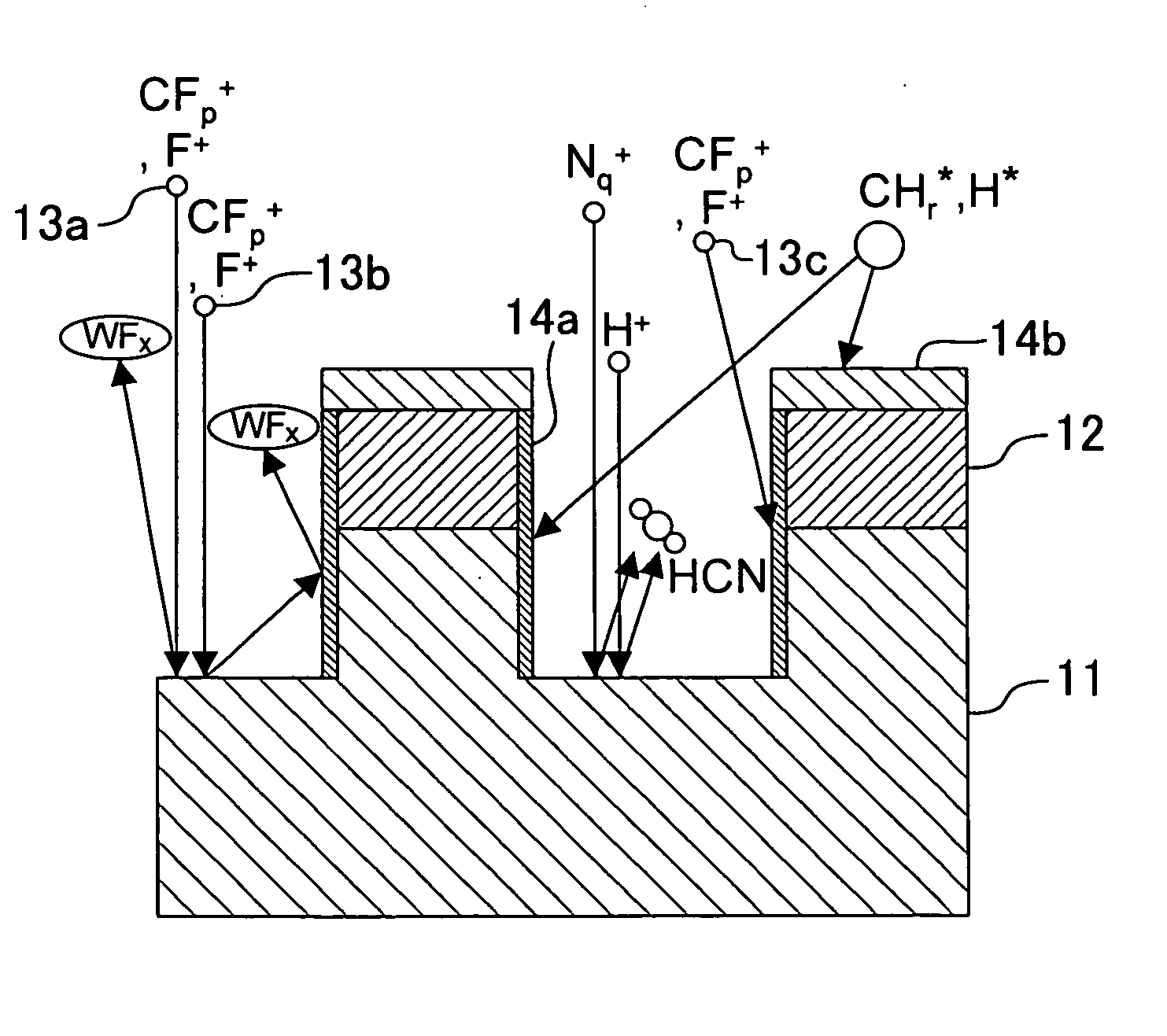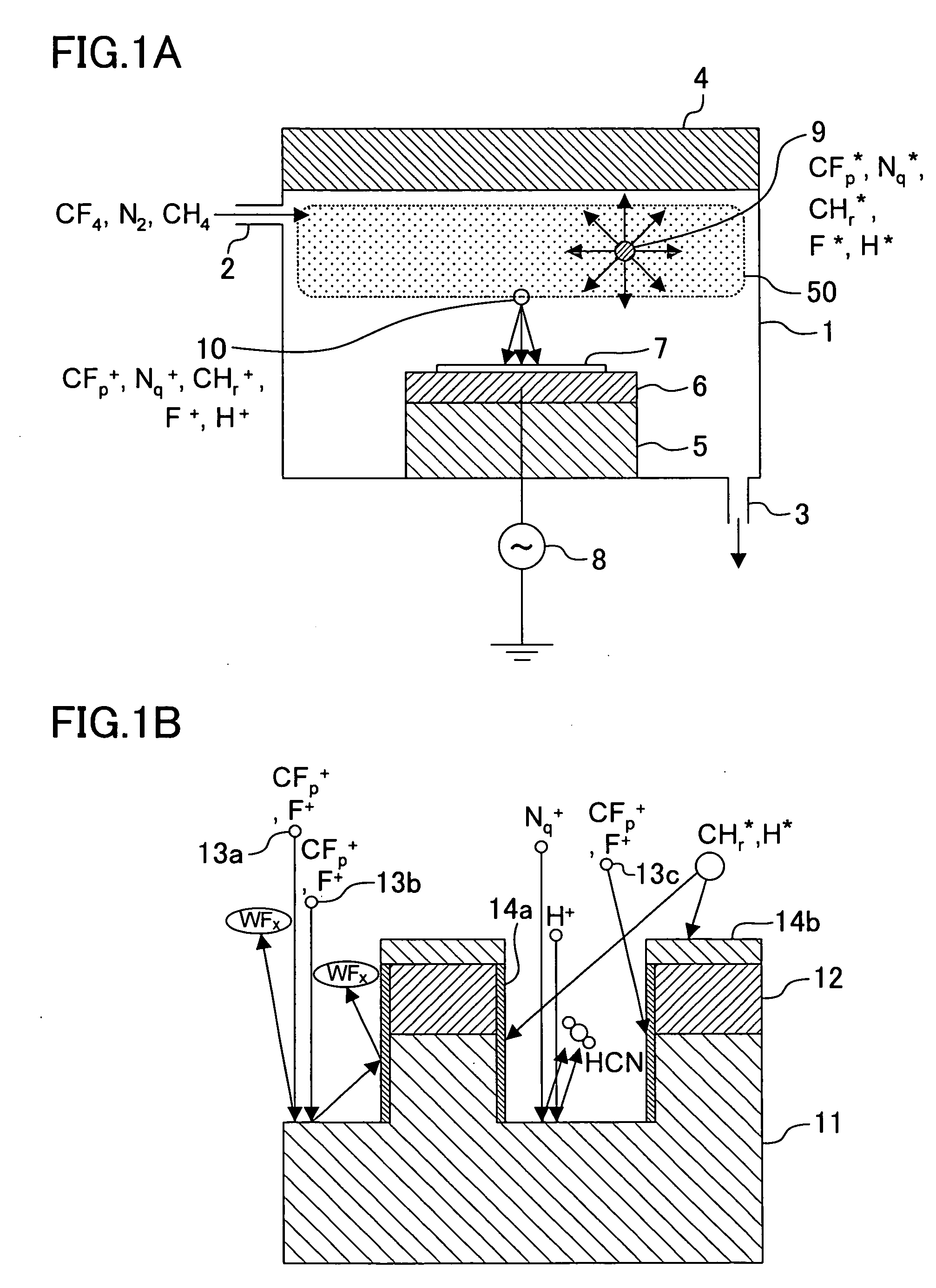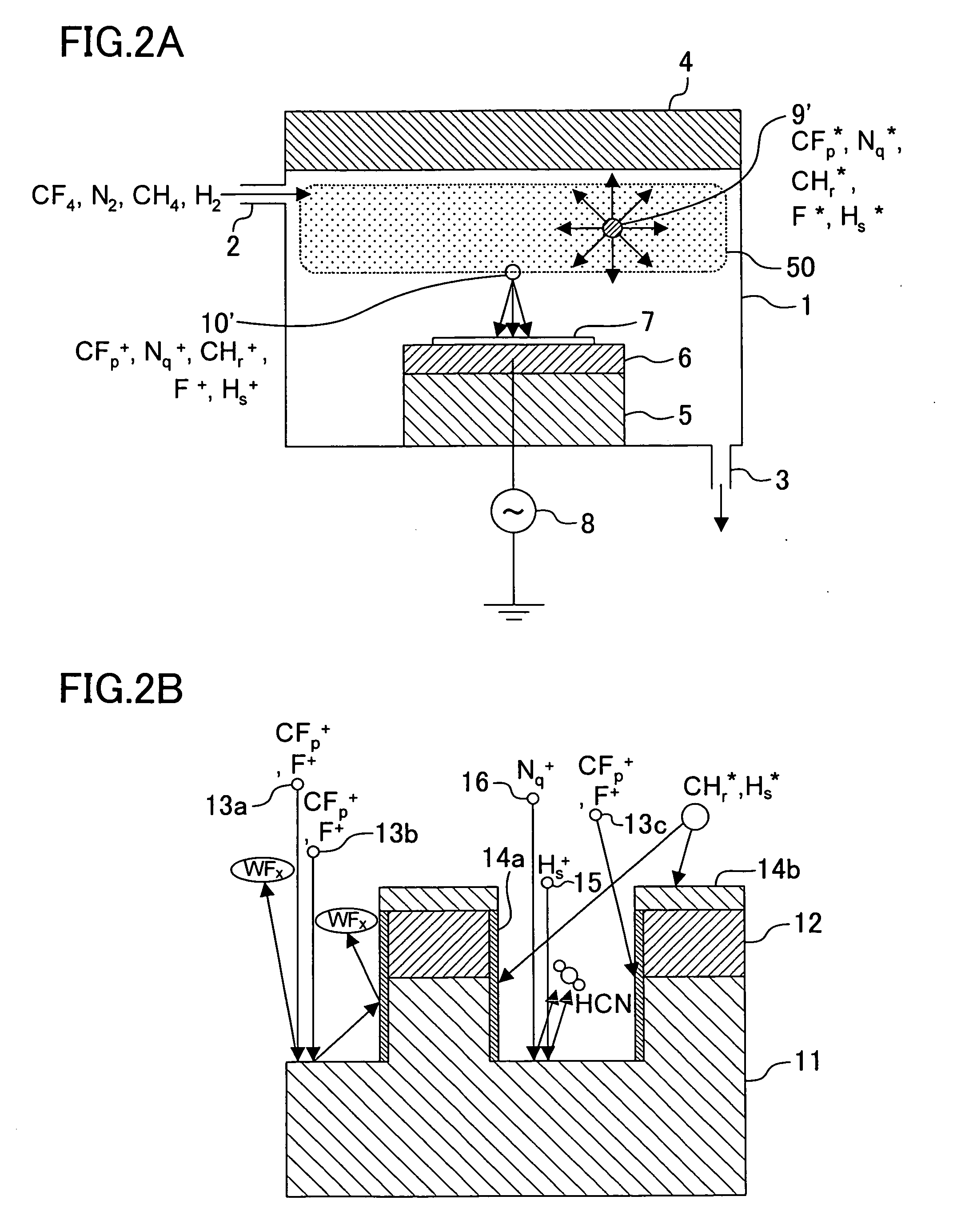Dry etching method, fine structure formation method, mold and mold fabrication method
- Summary
- Abstract
- Description
- Claims
- Application Information
AI Technical Summary
Benefits of technology
Problems solved by technology
Method used
Image
Examples
embodiment 1
[0079] A dry etching method according to Embodiment 1 of the invention will now be described with reference to the accompanying drawings.
[0080]FIGS. 1A and 1B are explanatory diagrams of the dry etching method of Embodiment 1 of the invention. As shown in FIG. 1A, a reaction chamber 1 in which a reduced pressure can be kept is provided with a gas inlet 2 and a gas outlet 3. Also, a plasma generator 4 for changing a gas supplied through the gas inlet 2 into plasma is provided in an upper portion of the reaction chamber 1. Furthermore, an electrode 6 on which a target substance including tungsten and carbon, specifically, a WC alloy substrate or a substrate having a WC alloy in its surface portion (hereinafter both referred to as a WC substrate 7), is placed is provided on an insulator 5 in a lower portion of the reaction chamber 1. An RF (radio frequency) power source 8 for applying a bias voltage to the electrode 6 is provided outside the reaction chamber 1.
[0081] Next, the operat...
embodiment 2
[0103] Now, a dry etching method according to Embodiment 2 of the invention will be described with reference to the accompanying drawings. A difference of the dry etching method of this embodiment from that of Embodiment 1 is that a substance including tungsten and carbon as principal compositions is dry etched by using plasma generated with a gas including a hydrogen atom (such as a hydrogen molecule or an ammonia molecule) further added to the mixed gas of the gas including a fluorine atom, the gas including a nitrogen atom and the gas including a hydrocarbon molecule.
[0104]FIGS. 2A and 2B are explanatory diagrams of the dry etching method of Embodiment 2 of the invention. In FIGS. 2A and 2B, like reference numerals are used to refer to like elements used in Embodiment 1 so as to omit the description. Also, in FIGS. 2A and 2B, a mixed gas of CF4, N2, CH4 and H2 is used as an etching gas.
[0105] As shown in FIG. 2A, a difference of this embodiment from Embodiment 1 is that radical...
embodiment 3
[0110] Now, a dry etching method according to Embodiment 3 of the invention will be described with reference to the accompanying drawings. A difference of the dry etching method of this embodiment from that of Embodiment 1 is that a substance including tungsten and carbon as principal components is dry etched by using plasma generated with at least one of a gas including a chlorine atom, a gas including a bromine atom and a gas including an iodine atom further added to the mixed gas of the gas including a fluorine atom, the gas including a nitrogen atom and the gas including a hydrocarbon molecule. In other words, an ion including a chlorine atom, an ion including a bromine atom or an ion including an iodine atom is produced in addition to an ion including a fluorine atom, an ion including a nitrogen atom, an ion including a hydrocarbon molecule in the plasma in this embodiment.
[0111]FIGS. 3A and 3B are explanatory diagrams of the dry etching method of Embodiment 3 of the invention...
PUM
| Property | Measurement | Unit |
|---|---|---|
| Structure | aaaaa | aaaaa |
| Content | aaaaa | aaaaa |
Abstract
Description
Claims
Application Information
 Login to View More
Login to View More - R&D
- Intellectual Property
- Life Sciences
- Materials
- Tech Scout
- Unparalleled Data Quality
- Higher Quality Content
- 60% Fewer Hallucinations
Browse by: Latest US Patents, China's latest patents, Technical Efficacy Thesaurus, Application Domain, Technology Topic, Popular Technical Reports.
© 2025 PatSnap. All rights reserved.Legal|Privacy policy|Modern Slavery Act Transparency Statement|Sitemap|About US| Contact US: help@patsnap.com



